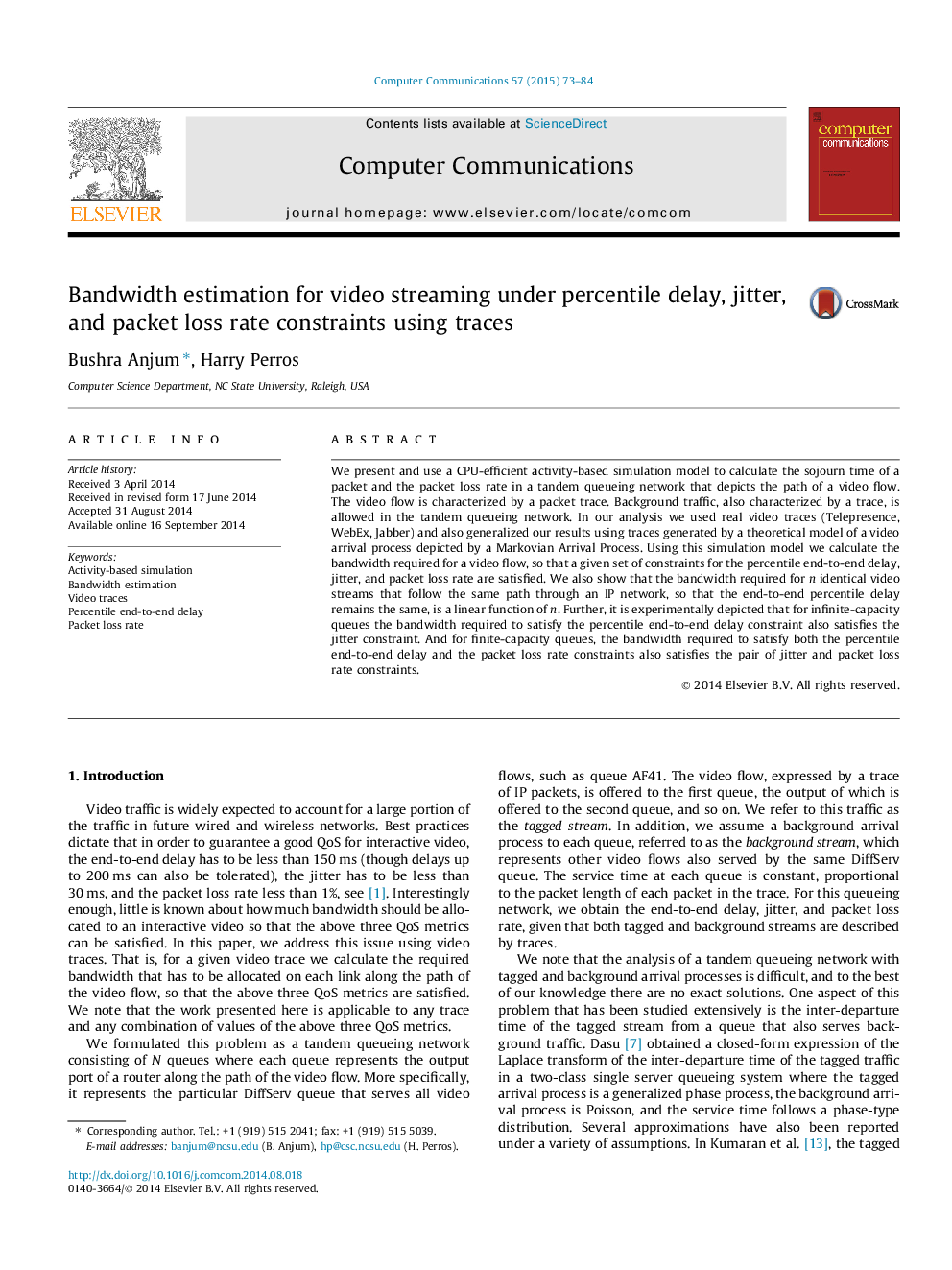| Article ID | Journal | Published Year | Pages | File Type |
|---|---|---|---|---|
| 445921 | Computer Communications | 2015 | 12 Pages |
We present and use a CPU-efficient activity-based simulation model to calculate the sojourn time of a packet and the packet loss rate in a tandem queueing network that depicts the path of a video flow. The video flow is characterized by a packet trace. Background traffic, also characterized by a trace, is allowed in the tandem queueing network. In our analysis we used real video traces (Telepresence, WebEx, Jabber) and also generalized our results using traces generated by a theoretical model of a video arrival process depicted by a Markovian Arrival Process. Using this simulation model we calculate the bandwidth required for a video flow, so that a given set of constraints for the percentile end-to-end delay, jitter, and packet loss rate are satisfied. We also show that the bandwidth required for n identical video streams that follow the same path through an IP network, so that the end-to-end percentile delay remains the same, is a linear function of n. Further, it is experimentally depicted that for infinite-capacity queues the bandwidth required to satisfy the percentile end-to-end delay constraint also satisfies the jitter constraint. And for finite-capacity queues, the bandwidth required to satisfy both the percentile end-to-end delay and the packet loss rate constraints also satisfies the pair of jitter and packet loss rate constraints.
